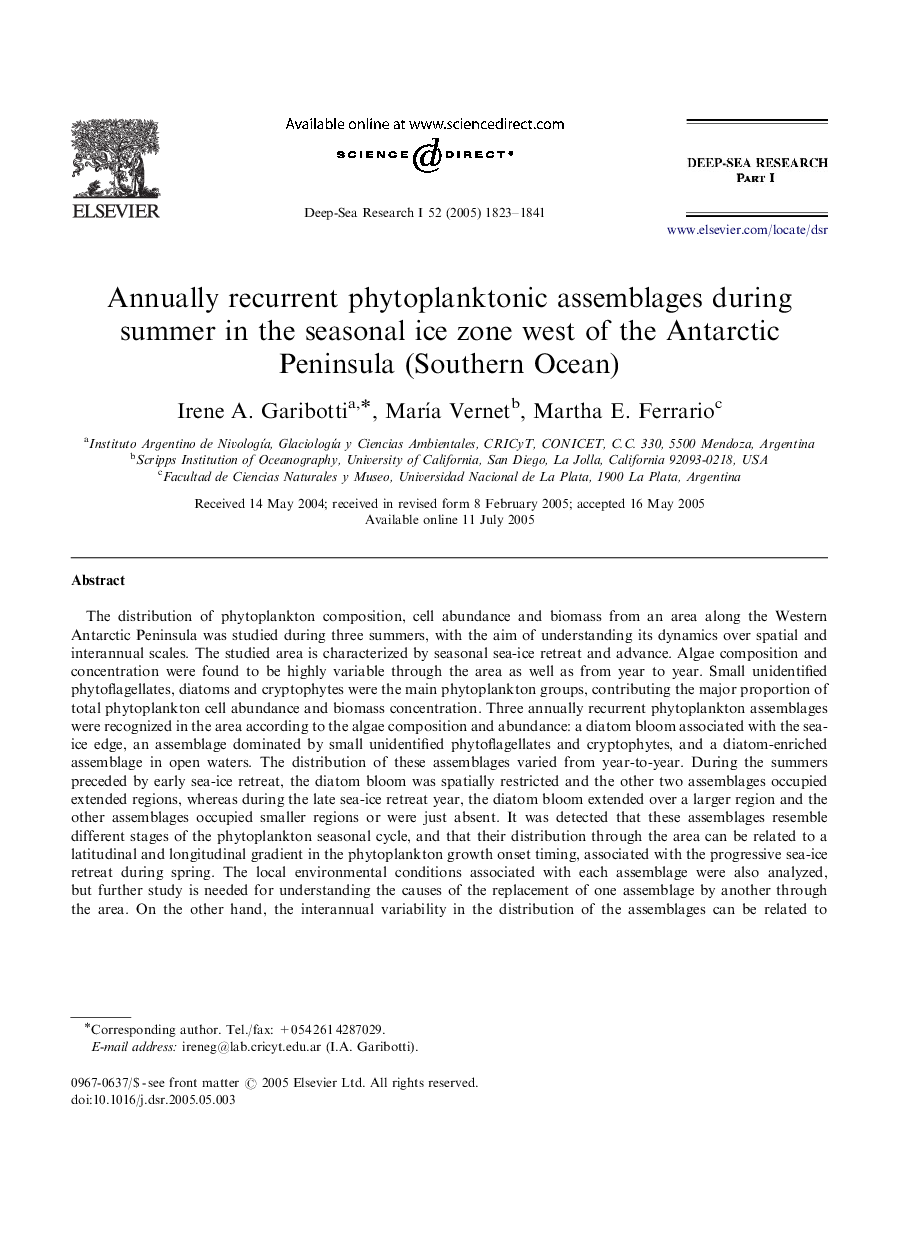| Article ID | Journal | Published Year | Pages | File Type |
|---|---|---|---|---|
| 9479566 | Deep Sea Research Part I: Oceanographic Research Papers | 2005 | 19 Pages |
Abstract
The distribution of phytoplankton composition, cell abundance and biomass from an area along the Western Antarctic Peninsula was studied during three summers, with the aim of understanding its dynamics over spatial and interannual scales. The studied area is characterized by seasonal sea-ice retreat and advance. Algae composition and concentration were found to be highly variable through the area as well as from year to year. Small unidentified phytoflagellates, diatoms and cryptophytes were the main phytoplankton groups, contributing the major proportion of total phytoplankton cell abundance and biomass concentration. Three annually recurrent phytoplankton assemblages were recognized in the area according to the algae composition and abundance: a diatom bloom associated with the sea-ice edge, an assemblage dominated by small unidentified phytoflagellates and cryptophytes, and a diatom-enriched assemblage in open waters. The distribution of these assemblages varied from year-to-year. During the summers preceded by early sea-ice retreat, the diatom bloom was spatially restricted and the other two assemblages occupied extended regions, whereas during the late sea-ice retreat year, the diatom bloom extended over a larger region and the other assemblages occupied smaller regions or were just absent. It was detected that these assemblages resemble different stages of the phytoplankton seasonal cycle, and that their distribution through the area can be related to a latitudinal and longitudinal gradient in the phytoplankton growth onset timing, associated with the progressive sea-ice retreat during spring. The local environmental conditions associated with each assemblage were also analyzed, but further study is needed for understanding the causes of the replacement of one assemblage by another through the area. On the other hand, the interannual variability in the distribution of the assemblages can be related to year-to-year differences in the timing of phytoplankton growth onset, associated with variations in the timing of the sea-ice retreat.
Related Topics
Physical Sciences and Engineering
Earth and Planetary Sciences
Geology
Authors
Irene A. Garibotti, MarÃa Vernet, Martha E. Ferrario,
